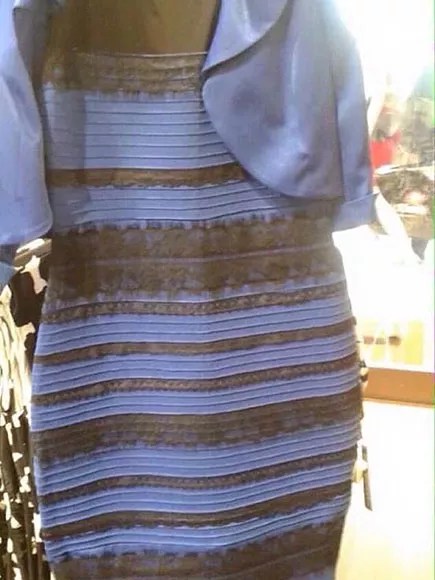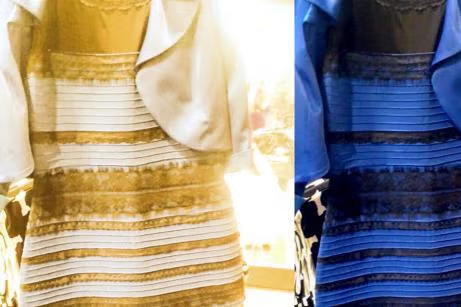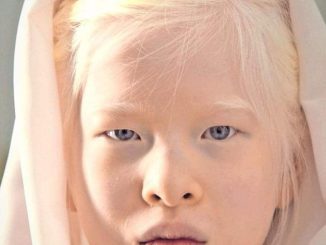In 2015, the Internet was set ablaze by one simple image—a dress that left the world divided. Some saw it as black and blue, while others swore it was white and gold. This seemingly trivial debate transformed into a cultural phenomenon, sparking discussions on perception, consciousness, and even neuroscience. But why did one dress cause such a stir? In this article, we explore the science behind the controversy, the impact on social media, and how our own brains can play tricks on us when it comes to color.
The Dress That Changed the Conversation on Perception

Remember the moment when you first saw the dress online? The image, which appeared on countless social networks, quickly became a battleground for opinions. Fashion enthusiasts and celebrities alike—yes, even Taylor Swift and Gigi Hadid—joined the debate, passionately arguing over its true colors. For many, it was a reminder of how subjective our perception can be. The dress wasn’t just a piece of fabric; it was a mirror reflecting the complexities of human vision and the brain’s role in interpreting reality.
The Neuroscience Behind Color Perception
Recent studies in neuroscience have finally shed light on this fascinating phenomenon. Dr. Pascal Wallisch, a clinical assistant professor at New York University, led a groundbreaking study that delved into the cognitive processes influencing how we see the dress. His research revealed that the key lies in how our brains interpret the lighting conditions in the photograph. The original image was overexposed, leaving the source of illumination uncertain. This uncertainty forced our brains to make assumptions about the environment, which in turn affected the colors we perceived.
Video : What is the color of the dress?Blue and black or white and gold?
Our brains are wired to adjust for varying light conditions. When faced with an ambiguous light source, the mind automatically “subtracts” the presumed color cast to make sense of what it sees. For example, if you assume the dress is illuminated by natural sunlight, your brain may cancel out the blue tones present in shadows, resulting in the perception of a white and gold dress. On the other hand, if you believe the dress is lit by artificial, yellowish light, you might subtract those hues, leaving the dress appearing black and blue. It’s a remarkable reminder that our perception of color isn’t just about the object itself—it’s deeply influenced by context and environmental cues.
Illumination and the Role of Shadows in Color Interpretation
Ever wondered why shadows often appear bluish? This is no coincidence. Shadows are typically cast by the absence of direct sunlight, which makes them cooler in tone. When our brains encounter an image with ambiguous lighting, like the dress, they instinctively try to adjust for these cooler shadows. If you’re among those who see the dress as white and gold, you might be subconsciously subtracting the blue hues from what you assume is a shadowed area. Conversely, if you see black and blue, you might be interpreting the lighting as coming from a warmer, artificial source.
This process of “color correction” is a basic cognitive function. It demonstrates how our visual system works tirelessly to maintain consistency in our perception despite the ever-changing conditions of our environment. In the case of the dress, the overexposed image left room for two competing interpretations, and our brains filled in the gaps based on personal experiences and assumptions about lighting.
How Daily Routines Influence What We See

Surprisingly, your personal habits might have more to do with your perception of the dress than you’d think. Dr. Wallisch’s study suggested that our exposure to natural versus artificial light plays a significant role in how we see colors. For instance, early risers who spend most of their day basking in natural sunlight are more inclined to see the dress as white and gold. Their eyes and brains are tuned to the nuances of daylight, which helps them interpret shadows differently. On the flip side, night owls—those who are accustomed to the glow of artificial light—tend to lean towards seeing the dress as black and blue.
This intriguing connection between our daily light exposure and color perception highlights how even subtle differences in our environment can influence our sensory experiences. It’s a vivid illustration of how the brain’s complex machinery is continuously adapting to make sense of the world around us.
Social Media: Fueling the Fire of Debate
It’s hard to imagine a time before social media, but platforms like Facebook, Twitter, and Instagram played a crucial role in catapulting the dress into the spotlight. The viral spread of the image turned what might have been an isolated curiosity into a full-blown cultural debate. Memes, hashtags, and endless comment threads flooded the Internet, each person convinced of their own interpretation.
Video : How to see The Dress BOTH ways (Black & Blue or White & Gold)
This digital frenzy wasn’t just about a dress—it was a collective exploration of human perception. The debate prompted discussions on the nature of reality and how our brains can sometimes lead us astray. Moreover, it became a case study for scientists, marketers, and even psychologists who saw an opportunity to understand the interplay between technology, social behavior, and cognitive science. In this way, the dress became a symbol of how a simple image can spark complex conversations about the human experience.
Understanding the Impact on Popular Culture and Neuroscience
The dress controversy transcended the boundaries of fashion and entered the realm of scientific inquiry. It served as a catalyst for numerous studies on visual perception and cognitive processing. Researchers found that when people were asked whether the dress was in a shadow, their answers significantly influenced the colors they reported seeing. Among participants who believed the dress was shrouded in shadow, a vast majority saw it as white and gold. Conversely, those who didn’t see the shadow were more divided in their opinions.
This phenomenon underscores a fundamental truth about our brains: our perceptions are not fixed but are instead shaped by context, experience, and expectation. The dress became a tangible example of how our sensory systems work to interpret complex visual stimuli, reminding us that what we see is often a product of both the external world and our internal mental processes.
Bridging Science and Everyday Life Through a Viral Image
What’s truly fascinating about the dress is how it managed to connect scientific inquiry with everyday experiences. It wasn’t just a topic for academic journals—it became a conversation starter at dinner tables, in offices, and across social media platforms. The simple act of debating the color of a dress bridged gaps between laypeople and experts, turning a seemingly trivial matter into an engaging exploration of neuroscience and human behavior.
The dress controversy is a perfect example of how modern culture can transform a fleeting moment into a lasting discussion. It highlights the power of social media to spread ideas rapidly and the importance of questioning our assumptions about what we see. After all, isn’t it interesting how something as mundane as an overexposed photograph can open up an entire field of study about our brain’s inner workings?
Conclusion: Embracing the Mystery of Perception
In the end, the debate over the dress is much more than a quirky Internet meme—it’s a testament to the intricate relationship between perception and reality. From the nuances of lighting and the role of shadows to the influence of our daily routines and exposure to natural versus artificial light, the way we see the world is a complex, dynamic process. The dress controversy invites us to reflect on how our brains work, challenging us to recognize that our perceptions are not always as straightforward as they seem.
This captivating story reminds us that the world is full of mysteries waiting to be unraveled, often in the most unexpected ways. So, the next time you find yourself caught in a debate over something as simple as the color of a dress, remember that it’s not just about fashion—it’s about the fascinating interplay between light, vision, and the human brain. Embrace the mystery, share a laugh, and appreciate how even the smallest details can spark profound conversations about the nature of reality.


